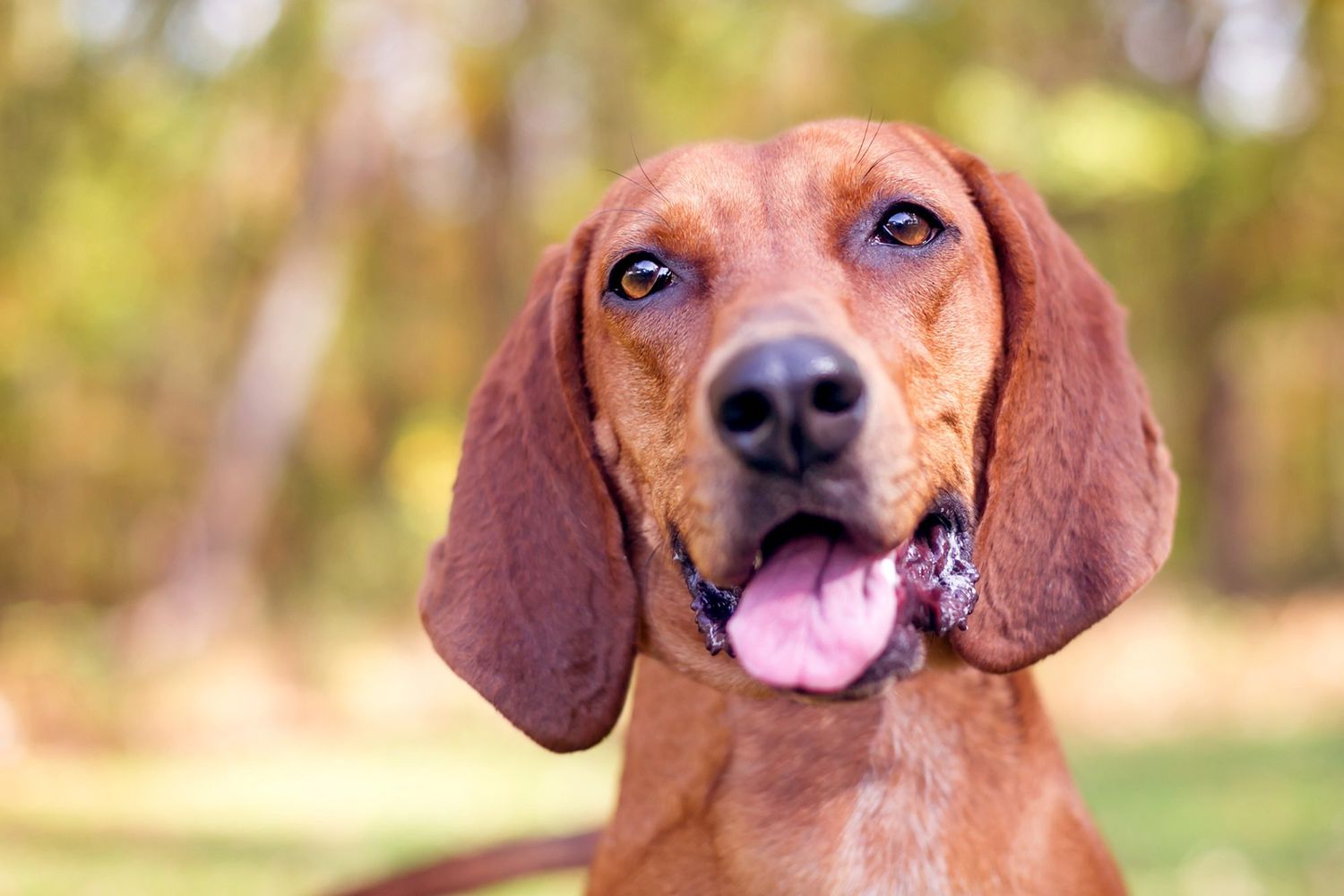
The Redbone Coonhound is a uniquely American breed, developed in the southern United States during the 18th and 19th centuries. Bred for hunting raccoons and other game across varied terrain, Redbone Coonhounds were shaped by blending Scottish red foxhounds and other European hound breeds with early American hunting dogs.
Early settlers needed a dog that could track by scent, swim, climb if necessary, and move effortlessly through the thick forests and swamps of the American South. The result was the Redbone: a keen-nosed, athletic dog with a striking solid red coat. By the mid-19th century, the Redbone Coonhound was already recognized as a distinct type and was later officially recognized by the American Kennel Club (AKC) in 2009.
Today, Redbone Coonhounds are still prized hunting dogs but are also increasingly popular as affectionate family companions.
While not as widely known as some other hound breeds, the Redbone Coonhound enjoys a strong following among hunters, outdoors enthusiasts, and hound lovers. Its appearance in popular culture—such as in Where the Red Fern Grows—helped endear the breed to a broader audience.
The breed’s easygoing nature and athleticism have earned it a place in active households across the United States and beyond.
The Redbone Coonhound is strikingly beautiful, with a sleek, uniform red coat and an athletic frame.
• Height: 21–27 inches (53–69 cm)
• Weight: 45–70 pounds (20–32 kg)
• Build: Muscular yet graceful, with long legs and a deep chest
• Coat: Short, smooth, and rich red in color
• Head: Moderately broad with a slight stop
• Eyes: Dark brown, with a soft, pleading expression
• Ears: Long, low-set, and drooping
• Tail: Long and carried high, often curved slightly
The Redbone Coonhound is intelligent, determined, and loving.
• Friendly: Extremely affectionate with family members
• Tenacious: Persistent when on a scent trail
• Energetic: Needs daily exercise and mental stimulation
• Vocal: Known for its deep, melodious baying
• Laid-back: Relaxed and easygoing at home, especially with enough exercise
• Social: Gets along well with children and other dogs
Training requires patience and consistency, especially given their independent, scent-driven instincts.

Redbone Coonhounds make loyal companions for individuals and families who enjoy an active lifestyle and appreciate a dog with a strong hunting heritage.
Ideal for:
• Active families or individuals
• Homes with access to yards or open space
• Owners who enjoy hiking, running, or outdoor adventures
• Hunters seeking a skilled tracking and treeing dog
Not ideal for:
• Apartment living unless exercise needs are thoroughly met
• Owners who prefer very quiet dogs (they are natural bayers)
• Low-energy households
• Exercise: Needs at least an hour of exercise daily, preferably more
• Training: Early socialization and positive reinforcement are crucial
• Grooming: Minimal—an occasional brushing keeps the coat healthy
• Living Environment: Thrives in suburban, rural, or active city homes with lots of outdoor opportunities
• Feeding: A high-quality diet designed for active, medium-to-large breeds
The Redbone Coonhound is a generally robust and healthy breed, living about 11–12 years. Some health concerns to be aware of include:
• Hip dysplasia
• Ear infections (due to their long, drooping ears)
• Obesity (if not properly exercised)
Routine veterinary care, ear cleaning, and maintaining an ideal weight are critical for keeping a Redbone Coonhound healthy.

• Bluetick Coonhound: Both are coonhounds, but the Redbone has a solid red coat and tends to be slightly more mellow indoors.
• American Foxhound: The Foxhound is leggier and faster; the Redbone is better suited for rugged terrain and treeing game.
• Treeing Walker Coonhound: Treeing Walkers are generally faster and slightly more driven, while Redbones are more easygoing off the trail.
Choose a Redbone Coonhound if you want a loyal, adventurous, and affectionate companion that will happily join you in the great outdoors.
Avoid if you can't meet the breed's need for exercise or prefer a dog that doesn’t vocalize.
Redbone Coonhounds can be found through reputable breeders, hunting dog networks, and breed-specific rescues. Always prioritize breeders who test for genetic health issues and raise puppies in healthy, socialized environments.
United Pet Club can help with adoption support, travel arrangements, microchip registry, and pet passports to make your Redbone Coonhound journey smooth!